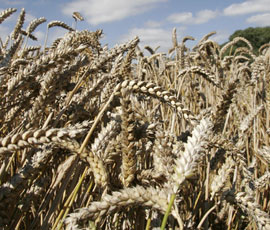Testing hints at a high fusaria year

Many growers battling against septoria after a poor weather and reduced spray opportunities now have the prospect of an increased fusarium ear blight and mycotoxin threat to contend with.
Samples collected from the five HGCA-funded fusarium CropMonitor sites across the UK show inoculum levels are the highest they have been for several years.
This includes both toxin-producing species F graminearum and F ulmorumc, as well as non toxin-producing but still yield-sapping Microdochium nivale, says disease specialist Phil Jennings of the Food and Environment Research Agency (FERA).
“Both fusarium species will have liked the warm, dry, early spring, which helped build inoculum on crop debris. The wet April then seems to have splashed F culmorum spores, in particular, up onto leaves,” says Dr Jennings.
Researchers have also seen more microdochium than in recent years, due to the relatively mild winter.
With disease pressure higher than usual, Dr Jennings urges growers to focus on T3 plans recommending a fusaria active triazole this season. “Prothioconazole is certainly best for fusarium, and metconazole and tebuconazole perform well too,” he says, “However unlike the others, prothioconazole has also shown good activity on microdochium, in studies here and on the continent.”

